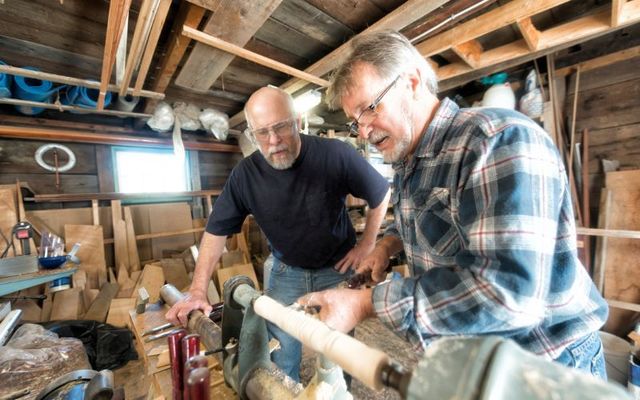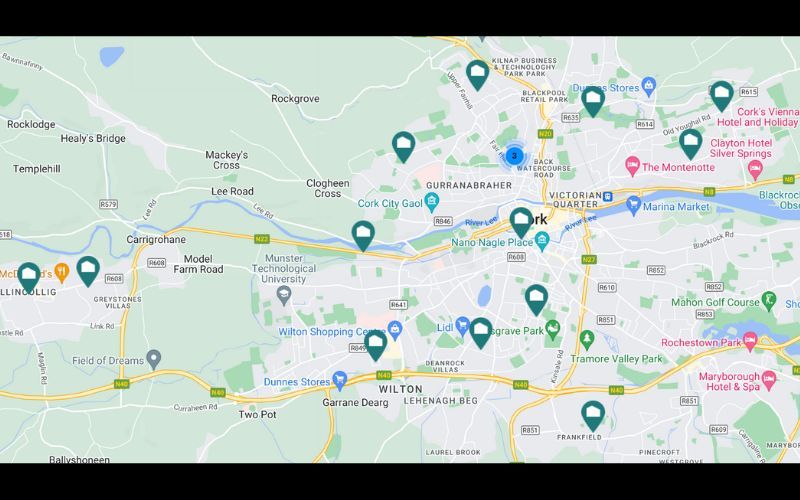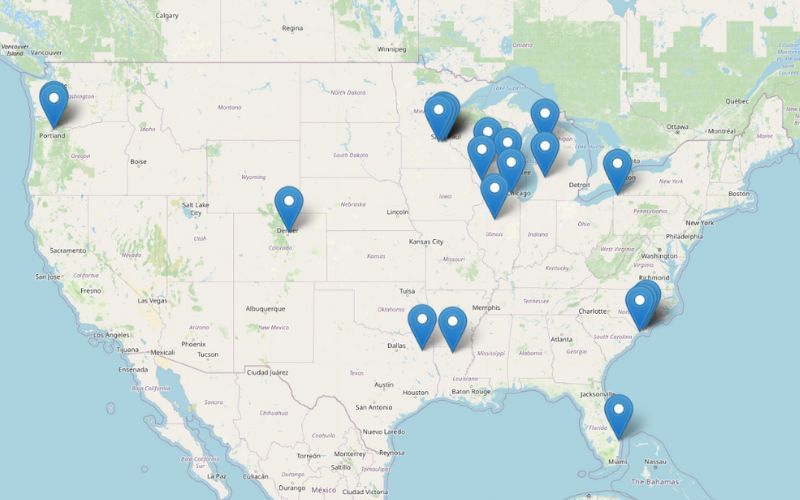While cycling the Waterford Greenway in Ireland last summer, I came upon a metal sculpture and accompanying story about metal workers in the Dungarvan area.
The art and explanation had been placed there by the Dungarvan Men’s Shed.
Men’s Shed? A quick Internet search introduced me to the wonderful world of Men’s Sheds.
Beginnings of Men's Sheds
Started in Australia, Men’s Sheds are places where men, typically older but not exclusively, gather to work on projects.
Initially hobby sheds, the scope of projects undertaken vary widely. Some sheds are true to their hobby beginnings so have woodworking equipment to build furniture or holiday ornaments. Other sheds focus on repairing bicycles that theY donate to the community. There are sheds that work on community projects like park clean up, literacy, or fund raising. And a “shed” may be a meeting room within a community center where men can just get together and talk.
Each shed’s focus is decided by its members (shedders) so in addition to the previous examples other projects may be beekeeping, lectures, choirs, health initiatives, walking clubs, model trains, and as I had discovered, public artworks.
Today, there are more Australian Men’s Sheds (1200+) than McDonald's restaurants (1034).
David Helmer, described as the George Washington of Men’s Sheds, was the driving force behind the Australian Men’s Shed Association (AMSA) in 2008 which began establishing sheds throughout Australia, especially in rural and remote locations.
Although the initial focus of sheds was as a hobby club, it became a place where men felt supported. According to Helmer, Australian professor John McDonald “connected the dots” between a shed and mental health, social isolation. When Dr. Barry Golding published "The Men’s Shed Movement: The Company of Men" in 2015, his work cast further light on the movement and its health benefits.
The collegial spirit of the sheds mirrored the tenets of the AMSA’s ethos - men learn Shoulder to Shoulder while working. The other AMSA tenet was that sheds were autonomous and self-funded, creating a franchise model. All shed members were equals and decisions made democratically. The movement’s motto, described by Helmer, is that shedders “leave their egos at the door and your past.”
With some assistance from the Australian government, through the department of Mental Health, the AMSA rapidly expanded the movement throughout the country. Today, with a population of 25 million, Australia has more than 1200 sheds.
Rapid Growth in Ireland
There are more than 400+ sheds in Ireland, quite impressive for a population of 5 million. The Irish Men’s Shed Association (IMSA) began in 2012. By 2013, there was a new shed opening every week in Ireland - All Ireland.
When sheds were getting started in Australia (2008), Ireland experienced the crash of the Celtic Tiger, causing widespread unemployment especially in the building trades. There were a lot of men with nothing to do.
The explosive growth in Ireland, according to the founder of the IMSA, John Evoy, was a combination of factors - timing, feet on the street, and where’s our shed?
By 2012, the economy hadn’t yet recovered but there were Irish community organizers in place. At that time the IMSA received funding from the Government of Ireland through the Department of Rural and Community Development.
Evoy visited Australia and embraced the franchise model that was so successful there, returning to Ireland with a good understanding of how to roll out the program. The IMSA began outreach to community organizers, feet on the street, especially in rural and remote areas where social isolation was more prevalent. Word and success spread quickly.
Ireland, being a small country, as soon as a shed opened in a community, a neighboring town would ask - where’s our shed? Evoy recalls that after a group of men visited a neighboring shed, the recommended steering committee for the new shed was usually in the car driving back home. So, community competitiveness and the IMSA drove growth across the Republic and Northern Ireland.
Today, All Ireland has the most sheds per capita among all countries with shed movements. (See International adoption.)
In the map below, Blue Stars represent multiple sheds in an area.
Irish Men's Sheds Association - locations in Ireland.
For example, below are the sheds in the Cork City area:
Health by Stealth
Although social isolation was an important factor and benefit of Men’s Sheds, it wasn’t the initial selling point to the men. Camaraderie and friendship was always the initial draw.
However, the Irish program incorporated an array of physical and mental health organizations available to the shedders. Sheds for Life, Healthy Ireland, to name two.
Evoy described the messaging efforts as “health by stealth.” Flyers about the available programs left at sheds invariably disappeared.
What about America?
So, Men's Sheds have pretty impressive coverage in Ireland and other English-speaking countries. I went to the USMSA site and searched for sheds in New York City.
Clearly, the Men’s Shed movement hasn’t jumped the pond. Yet.
The expansion of the sheds movement in Australia and Ireland followed recognition and support for the movement by their respective governments.
In 2010, the Australian government’s National Male Health Policy recognized the need and benefits of Men’s sheds with support for the AMSA.
In 2012, the Irish Men’s Shed Association (IMSA) received funding by the Government of Ireland through the Department of Rural and Community Development.
In both instances, positive health outcomes were considerations for government support. Men’s Sheds were an effective way to lessen social isolation. Australia’s Helmer noted that “social isolation is the tipping point to other (health) issues.”
There is an American association working to promote the movement. However, according to Mark Winston, co-director of the US Men’s Shed Association (USMSA), there are two challenges - “Awareness and identifying willing volunteers.”
As part of their promotion of sheds, the association directors are active with the American Society on Aging, Men’s Health Network, Men’s Health Caucus, and Evolve 2023 - Senior Living Foresight. Their outreach is showing signs of rising awareness. There are definitely growing concerns about social isolation within the US government.
Surgeon General Dr. Vivek Murthy has written about social isolation and loneliness in an article in the Harvard Business Review - "Reducing isolation at work is good for business" (September 26, 2017). (Both Australia’s Helmer and Ireland’s Evoy mention Dr. Murthy’s work about social isolation as inspiring.)
More recently, the Surgeon General labeled the issue an epidemic in the 2023 report "Our Epidemic of Loneliness and Isolation." According to the advisory, “Social isolation and loneliness increases your risk for heart disease by 29 percent, stroke by 32 percent, and dementia in older adults by 50 percent.”
Connecticut Senator Chris Murphy recently proposed legislation The National Strategy for Social Connection Act to create a national strategy to address America’s epidemic of loneliness and promote social connection in our communities.
Congressman Donald M. Payne, Jr of New Jersey proposed Bill HR5986 to create a Men’s Health department as part of the Department of Health and Human Services (HHS).
All these initiatives provide the growing awareness the USMSA is hoping will position Men’s Sheds as a remedy, leaving the issue of willing volunteers.
For leadership, Steve Werner, co-director of the USMSA, explains what is needed to start a successful shed. “It really depends on the motivation of the person doing this … it takes a lot of energy. … because it's very difficult to find people who have the wherewithal and gumption … to start a shed. … It really takes a team.” In addition to a leader, a steering committee that takes advice from the USMSA is needed; otherwise, Werner laments, “failure will ensue.”
That leadership may be forthcoming from organizations providing social services while expanding the leadership pool.
Women play a significant role in creating and managing Men’s Sheds. US Women are 25% of shed starters. Internationally, 20% of shed starters are women. Given the democratic nature of the sheds, women are welcome in sheds. As women are well-represented in social services organizations, not surprisingly, a recent bright spot for the US movement is by women.
“I heard about the Men's Shed concept while attending an American Society on Aging conference in the spring of 2023. The idea of Men's Sheds caught my attention because it addresses the need for social connection, support, and purpose among older men. It was fascinating to learn how these community spaces provide opportunities for men to come together, share skills, and engage in meaningful activities.” explained Yvette Gosline, CMSW Chief Operating Officer, Brunswick Senior Resources, Inc. in North Carolina.
Those thoughts turned to action. Tammy Sutherland, also of Brunswick Senior Resources (BSR), was tasked to start Men’s Sheds among the five BSR locations. Community surveys quickly returned interest among three locations: one for model train enthusiasts, another pursuing community service and another that hosts discussions and storytelling. Those three locations now host Men’s Sheds.
Sutherland noted, “The beauty of the Men’s Shed … it really is the men deciding what they want to do, using their talents and skills they’ve cultivated over decades, so it gives them more purpose, … realizing they have a lot to contribute. So part of the beauty is (the sheds are) self-driven, self-organized.”
So, with growing concern about social isolation and loneliness within the government and among social services organizations, Men’s Sheds may be a viable solution. If the US follows the steps for success Australia and Ireland took, government support and outreach to existing social service organizations like Brunswick Senior Resources, there may be more leaders willing to work shoulder to shoulder with men. Together we are stronger.






Comments